He is a proponent and participant of the first afforestation project in Vietnam, which aims to return the green to bare land and hills in the country. Prof. Lung talked with VietNamnet about the impact of hydropower projects on the environment.
What do you think about the idea that small hydropower projects, which use vast areas of natural forest, have caused serious flooding in the Central Vietnam at present?
Prof. Nguyen Ngoc Lung: Vietnam is one of the six countries in the world most affected by climate change in the last four years. The central region is the most heavily affected area in Vietnam.
For objective reasons, it is difficult for people to overcome because it is the natural law of rain and wind and the natural geographic and topographic of the central region, which has coastal areas, plains, midlands, bare hills and mountains that are high and steep...
However, there are also nonobjective causes that humans can overcome or mitigate.
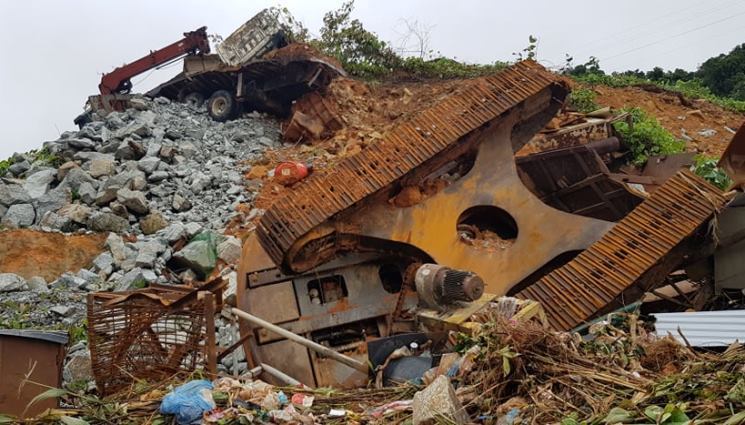 |
|
The scene of a landslide at Rao Trang 3 hydropower plant in the central province of Thua Thien – Hue.
|
Hydropower plants, for their own benefit, should always keep the water level high so that there is enough water in the dry season to generate electricity. If the water is regulated in a common way on the whole flow, I would ask them to reduce the water level completely, so that if the rain prolongs, it is still difficult for the dam to spill or dikes to break ...
In this situation, we instinctively regulate hydropower plants, not regulate them based on the flow.
We currently let small hydropower plants operate without coordinated planning. The big ones are built and managed by the state. Small and medium ones have been privatized in the past 20 years. Thus we are breaking the planning of the whole river. We should only build 5 or 10 hydropower plants on a river so they can cooperate in regulating water in the rainy or dry season, and for the sake of the common development of the country rather than the benefit of each plant.
 |
|
Professor Nguyen Ngoc Lung
|
Hydropower plants are divided into two kinds for management. Those with a capacity of more than 10 MW are under the management of the state, specifically the Ministry of Natural Resources and Environment, while those with capacity of less than 10 MW are being ratified and controlled by provincial authorities.
This mechanism is problematic because no matter how small the capacity it is, a 5–10 MW hydropower plant is also a large area of forest. Some hydropower developers used tricks to avoid making environmental impact assessment reports. Thus, hydroelectricity is not the fault, but the way humans manage and regulate it.
We are trading the environment for economic benefits, sacrificing forests for electricity. We need to see if this trade-off is beneficial or not. In other words, people call this a trade-off with nature.
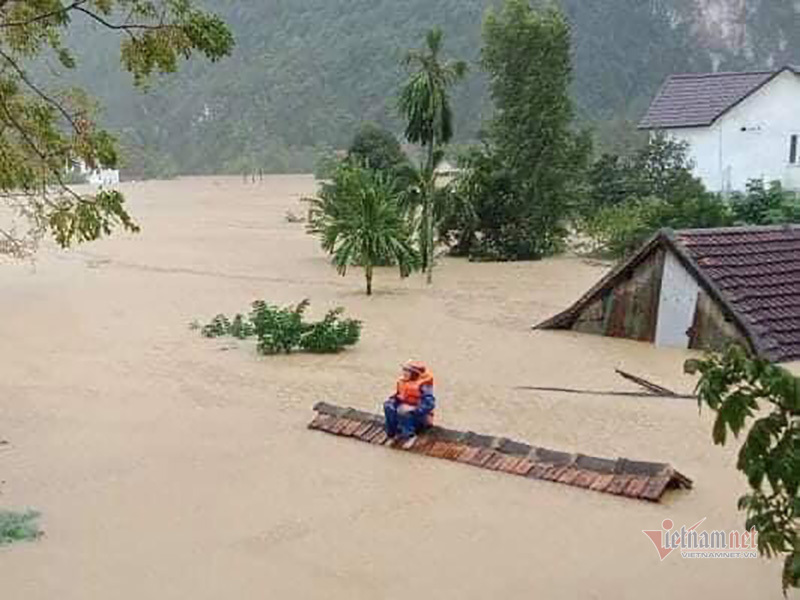 |
|
A resident in Tan Hoa commune, Minh Hoa district in the central province of Quang Binh sits on a roof waiting for rescue. Photo taken at 10am on October 19
|
At the macro level we can manage hydropower, but it is difficult for micro-level projects. It is like if the state plans to build 5 hydropower plants so we can control them, but there are 20 more smaller plants emerging later, approved by local governments. And then the water regulation is broken.
We talk about afforestation, but international experts recommend that it is better to keep 1ha of natural forest than develop 5-10ha of planted forest. What is your opinion about this?
We need to make this clear. That is the role of natural forests. If the land is bare, the hill is barren, there are only grass and shrubs, when it rains, 95% of the soil spills over, only 5% soaks a thin layer into the soil. The amount of water overflowing on the surface is called flood, such as tube flood, flash flood ...
But with natural forests, 90% of the falling water does not flow over the surface. If a normal rain lasts 1-2 hours with a rainfall of about 100mm, there is no water flowing over the surface, after rain, the ground has no water. All the water becomes groundwater.
The natural forest is so good because it has a canopy, with different layers of trees, rotting vegetation, and a root system 20-30m deep (the depth of the roots is equivalent to tree height).
Meanwhile, the effect of planted forests is equivalent to 1/5 of that of natural forests. In fact, when building hydropower plants, very few investors have alternative afforestation plans after the natural forest is chopped down. As a result, natural forests disappear while the planted forest area cannot compensate for the lost area without taking into account the efficiency of water, soil and environmental preservation of the two types of forests.
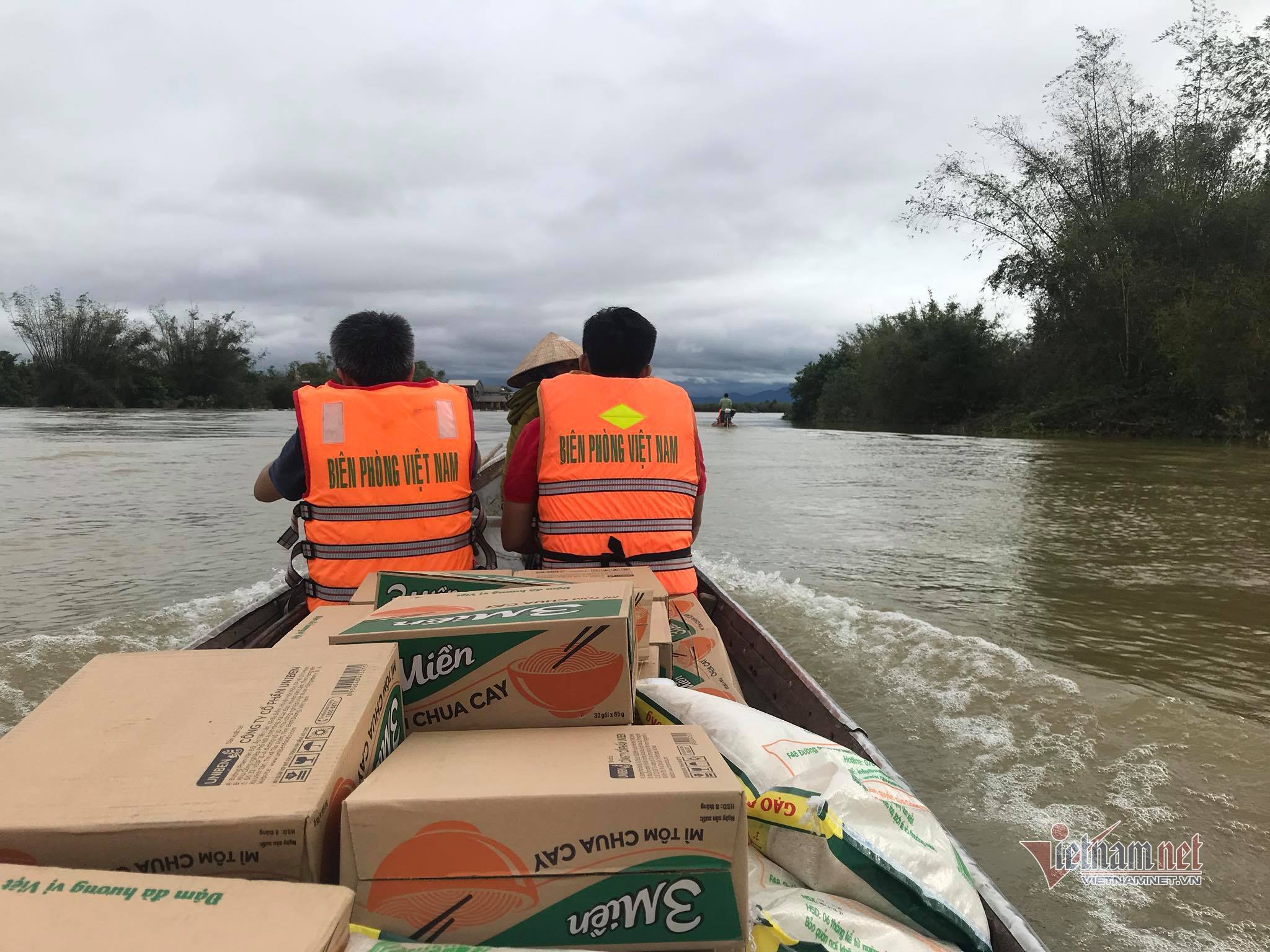 |
|
Border guards transport relief supplies to Dong Truong village, Hai Truong commune, Hai Lang district, in Quang Tri province.
|
While the world tries to protect natural forests, we deforest natural forests to develop the forest economy. No matter how poor the natural forest is, the biodiversity is many times higher than the planted forest for the above-mentioned effects. Therefore, international experts recommend that it is better to keep 1 ha of natural forest than to develop 5-10 ha of planted forest.
In Vietnam, although the forest coverage has increased, very few natural forests have been maintained.
Are we paying the price for what you said: the trade-off with nature?
That's right. We see very clearly what we have sacrificed but we do not know that it is a sacrifice. We exchange the risks for the economic-development advantage, but we do not know how big the risks are - it is an environmental risk.
In 1945, our natural forest still accounted for about 95%. Over the course of economic development, the forest has become exhausted. In 1992-1993, the State had an ecological restoration program, program 327, which aimed at restoring forest coverage from 27% to 42%, close to the level when the French left, which was 43%.
In terms of acreage, for the quality of forest as I said, it has not been achieved. There are countries where the forest accounts for 30-35% of the total area, but they have the plan called stable forest estate.
We have also seen the cost of deforestation. Because of deforestation, floods occur upstream, not downstream. It has been proved that forests are the best factor for people to participate in the fight against climate change. The poor are also able to participate. It is important that they plant and preserve forests. We have taken a lot of the forest, but how much do we give back?
Thai An
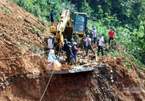
What cause disasters in central Vietnam?
Many people have died in the central region, thousands of people are living outdoors, and infrastructure has been destroyed by floods and landslides. Why does the central region suffer from disasters every year?
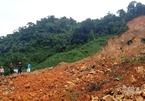
Will hydro-power plants cause more floods in Vietnam?
If there were no hydroelectric dams, floods would still occur, even at a higher level. In many cases, without hydropower reservoirs, floods would be more serious.